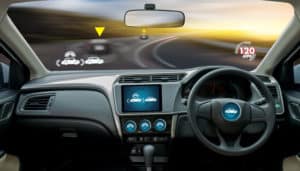Roadblocks Ahead for Consumer-Owned AV Adoption, Execs Say

LAS VEGAS — While autonomous vehicle fleets are sparking widespread interest in the industry, executives at an SFIG 2019 panel said widespread adoption of consumer-owned AVs is still at least a decade away.
“We’re in the early stages of an industry revolution,” said Theresa O’Neill, managing director at Bank of America Merrill Lynch.
The consensus of the panel is that AVs can be made available, perhaps even commonplace, via ride-hailing platforms. However, for personal ownership to be widely adopted, there needs to be cultural acceptance, regulatory approval, and technological advancements.
GM Financial’s Sheli Fitzgerald said autonomous vehicles, made available by ride-hailing platforms, are about five years away from being commonplace in the market. “That [estimate] is really driven” by GM’s Cruise Automation, said Fitzgerald, the senior vice president of corporate finance. “They have had vehicles on the road, they have had a lot of testing, they have logged a lot of miles in major metropolitan areas, specifically within San Francisco.” Personal ownership of AVs, on the other hand, will take much longer, she said.
Fitzgerald added that GM and others involved in manufacturing autonomous vehicles will need to ensure the vehicles are safe before rolling out any products to the public. MUFG Managing Director Ann Tran agreed that as long as the technology is available and regulatory bodies are forthcoming, “then from a consumer adoption standpoint, it should be very straightforward.”
Kroll Bond Rating Agency’s Rosemary Kelley said elements of autonomous vehicles are already permeating the market.”If you go out and buy a new vehicle with all the new features, there’s been a progression over time in terms of how technology is being incorporated into vehicles that we’re driving today.” She said, “it is going to be a constant progression and I think that we may not be realizing how we’re getting used to these items on a day to day basis.”
Alan Koines, the assistant treasurer of Avis Budget Group Inc., said “as far as widespread adoption goes, it’s going to be five to 10 years, possibly even longer.” There are cultural hurdles that AV OEMs will need to overcome, he said, noting a case where an apprehensive rider declined to take a driverless Lyft vehicle.
Infrastructure will be another roadblock, Koines added. “Driverless cars work really well when all the lines are bright white and you don’t have things coming off from the side or coming down the side,” adding there likely needs to be a countrywide network and widespread adoption to spur such infrastructural changes.
For more content like this, check out our upcoming event Auto Finance Accelerate, May 13-16 at the Omni San Diego. Visit www.AutoFinanceAccelerate.com to register.















